An Introduction Through Key Works
Joan Mitchell explored various approaches to abstraction throughout her career, from her studies at the Art Institute of Chicago, critical years in Paris and New York from the late 1940s to the ‘60s, to her final decades living in the French countryside. Here, we have selected a set of key works that highlight important themes and transitional moments in her oeuvre.
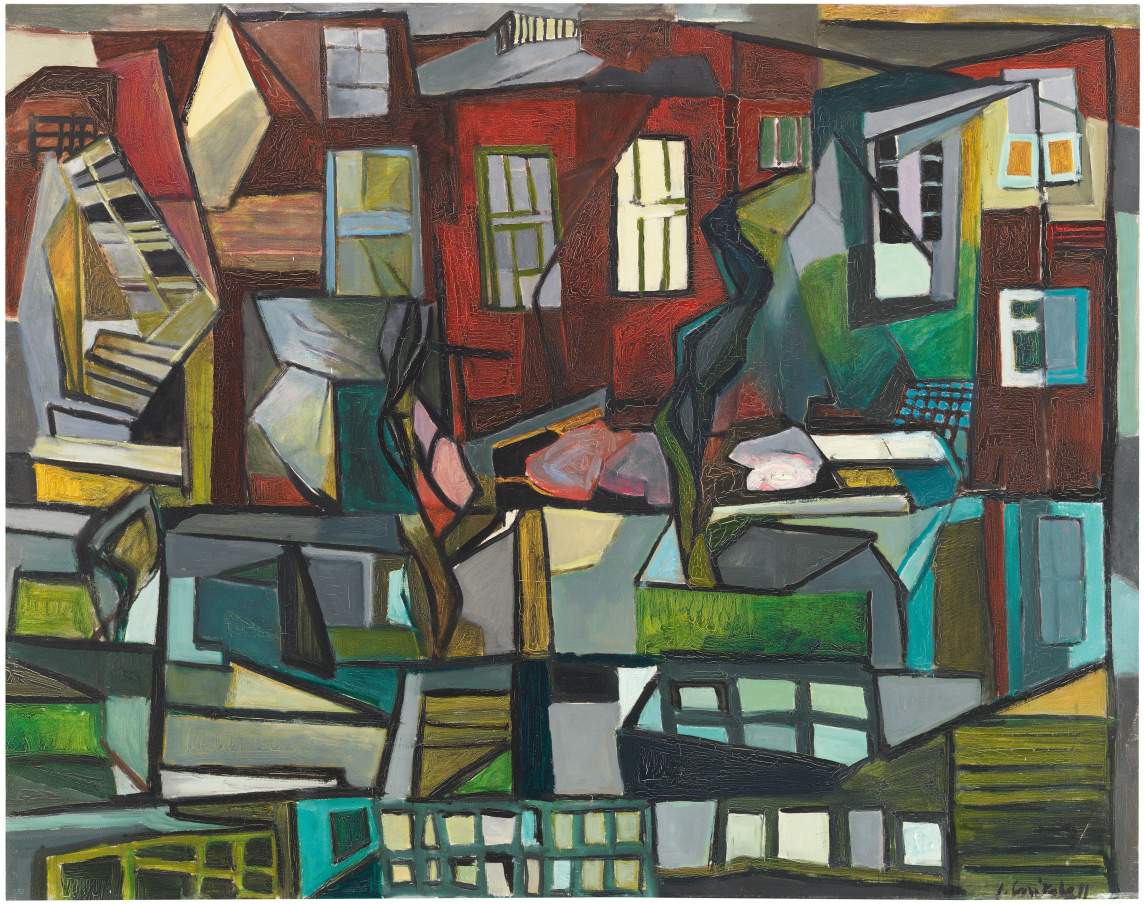
Backyards, 1950
As a student at the School of the Art Institute of Chicago from 1945-47, Mitchell studied and experimented with developments in modern painting from the mid-nineteenth century onward. Her paintings from 1948-50 engage with Cubism and its approach to rendering forms and spaces through constellations of flat, geometric shapes. Backyards, from 1950, captures a dense, interwoven city landscape of building facades, windows, and green spaces. It was painted shortly after Mitchell returned to New York from France, in a period where her work rapidly became increasingly abstract and she began to focus more on the interplay of shapes and colors rather than the representation of her subjects.

Cross Section of a Bridge, 1951
By 1951, Mitchell had moved fully into abstraction, creating a body of work that dropped recognizable imagery in favor of interlocking shapes in a palette of cool grays and blues enlivened with pops of vivid red and yellow. Though most are untitled, some, including Cross Section of a Bridge, bear titles that suggest anchors in observed landscapes, whether rural or urban. Throughout her career, Mitchell’s paintings frequently connected directly to her experiences of real places, people, poetry, and music—never as direct visual corollaries, but as distillations or transpositions of her memories and responses.
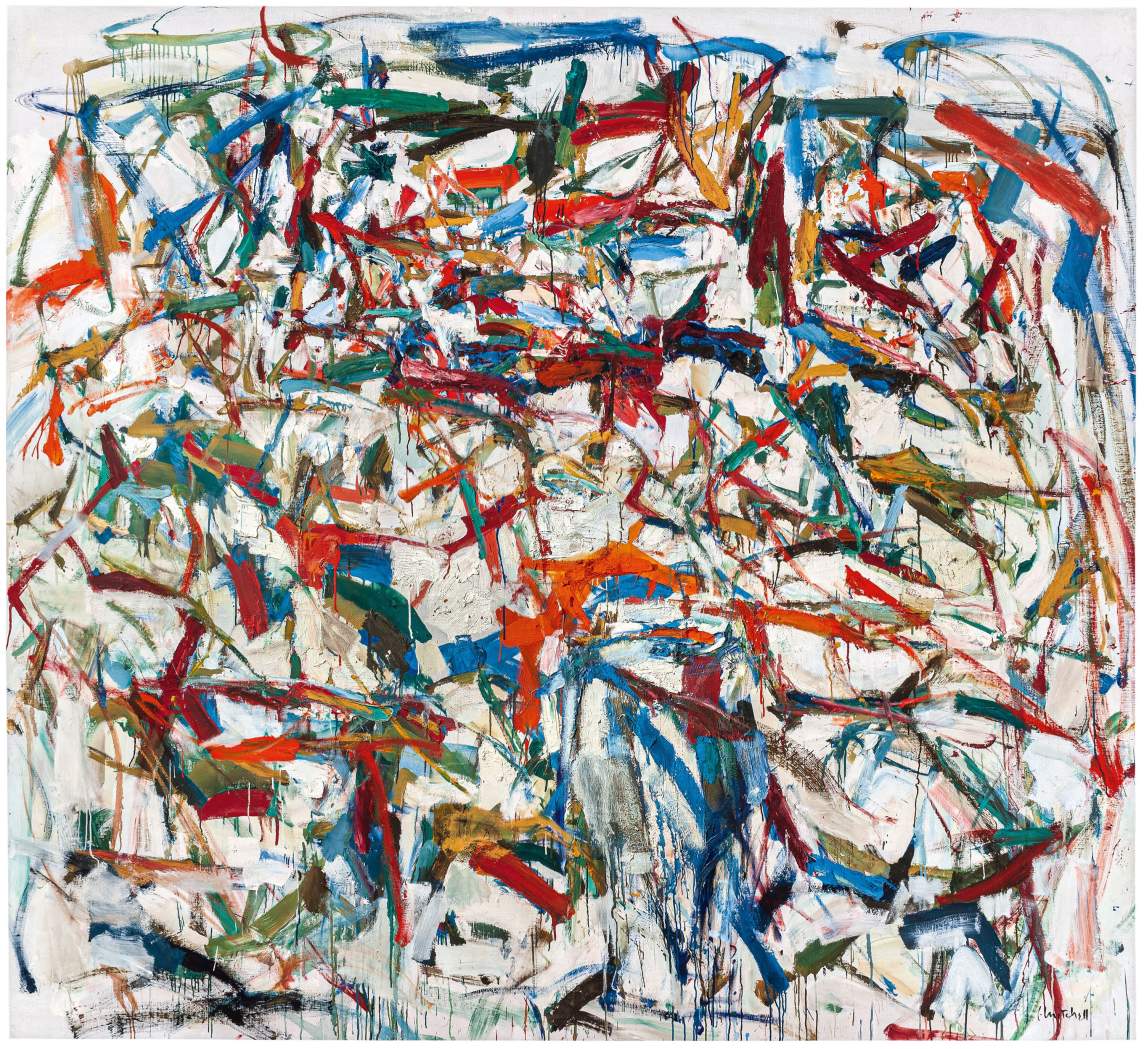
Evenings on 73rd Street, 1957
Mitchell described herself as painting “the feeling of a landscape.” For her, the idea of landscape encompassed urban, rural, and even social spaces. The title of Evenings on 73rd Street refers to the lively gatherings that she enjoyed with her circle of poet and painter friends in the home of Hal Fondren on 73rd Street in Manhattan. With its branch-like, energetic brush marks, complex color palette, and liberal use of white paint to articulate space and light, this painting exemplifies Mitchell’s signature 1950s style, developed when she—along with her peers Willem de Kooning, Michael Goldberg, Philip Guston, and Franz Kline—was at the center of New York conversations emphasizing the creation of works that were authentic, direct expressions of the artist’s individuality or experience.
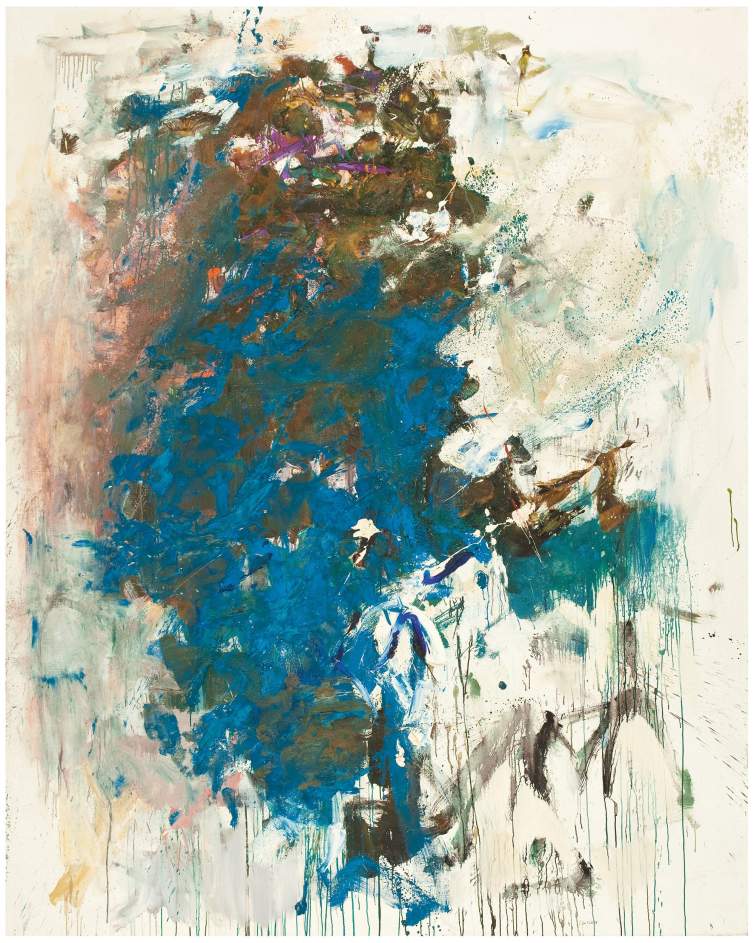
Blue Tree, 1964
After moving to Paris in 1959, Mitchell began to experiment with pouring, flinging, and rubbing paint into her canvases to build up thick, central masses of color surrounded by dripped tendrils and atmospheric washes. In Blue Tree, an earthy brown grounds the vibrant blues, enlivened by flashes of violet and pink. In this period, Mitchell often drew inspiration from the rocky landscape and rugged trees of the Mediterranean, as she frequently sailed around Corsica and the French coast.
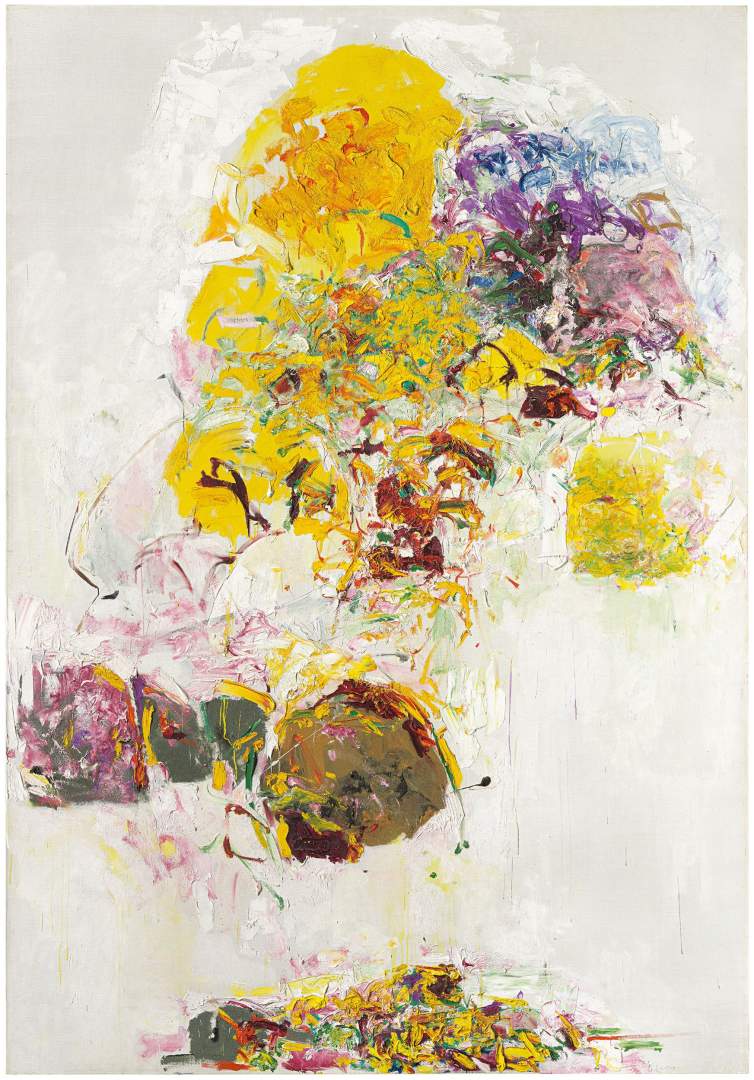
Sunflower, 1969
After moving in 1968 to Vétheuil, a town in the French countryside northwest of Paris, Mitchell embraced color in a new way, creating lush, unabashedly beautiful canvases with direct references to nature. A suite of Sunflower paintings from 1969 connects with her lifelong interest in the paintings of Vincent Van Gogh, whose work she knew as a child from her visits to the Art Institute of Chicago. In 1986, she said of sunflowers: “They look so wonderful when young and they are so very moving when they are dying... I like them alone or, of course, painted by Van Gogh.”
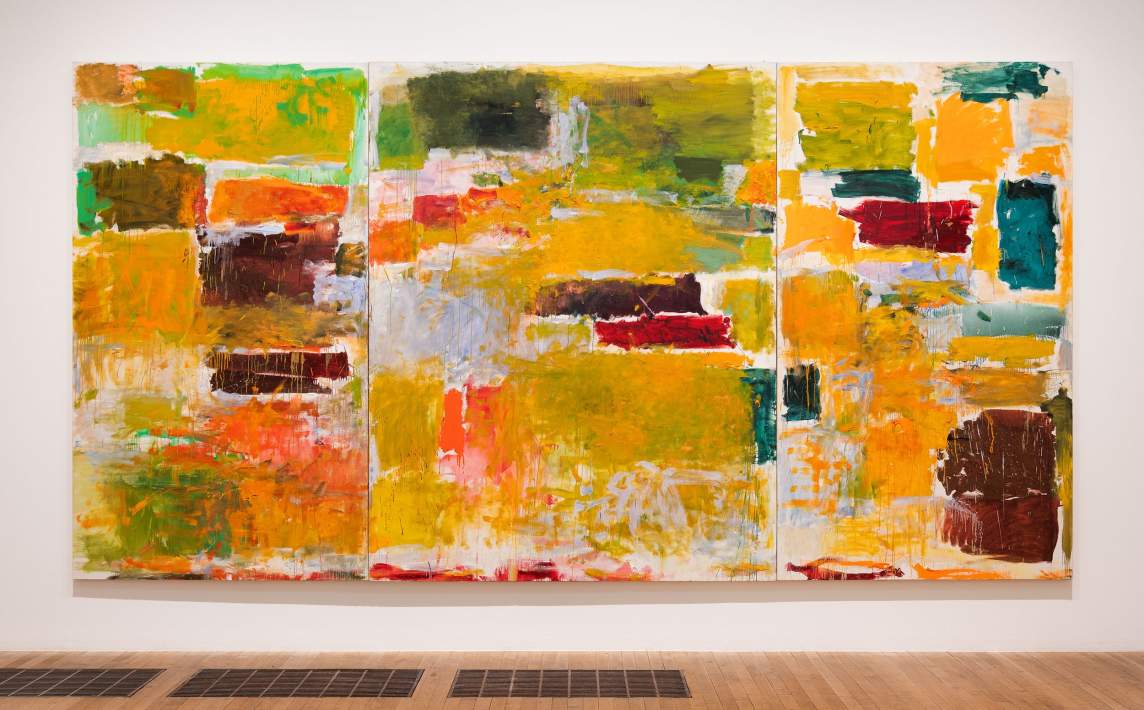
Plowed Field, 1971
Plowed Field stretches more than seventeen feet (five metres) in width. Its rich patches of gold, green, ochre, and red suggest an aerial or panoramic view of agricultural fields, offering a different visual perspective on landscape than that in much of Mitchell’s previous work. Since the early-1960s Mitchell had been securing multiple canvases together into a single finished painting, using the vertical breaks between panels to induce looking back and forth and inflect the overall rhythm of a work. The multi-panel format made it possible for her to make such expansively wide paintings that echo the physical experience of standing in or moving through the natural world.
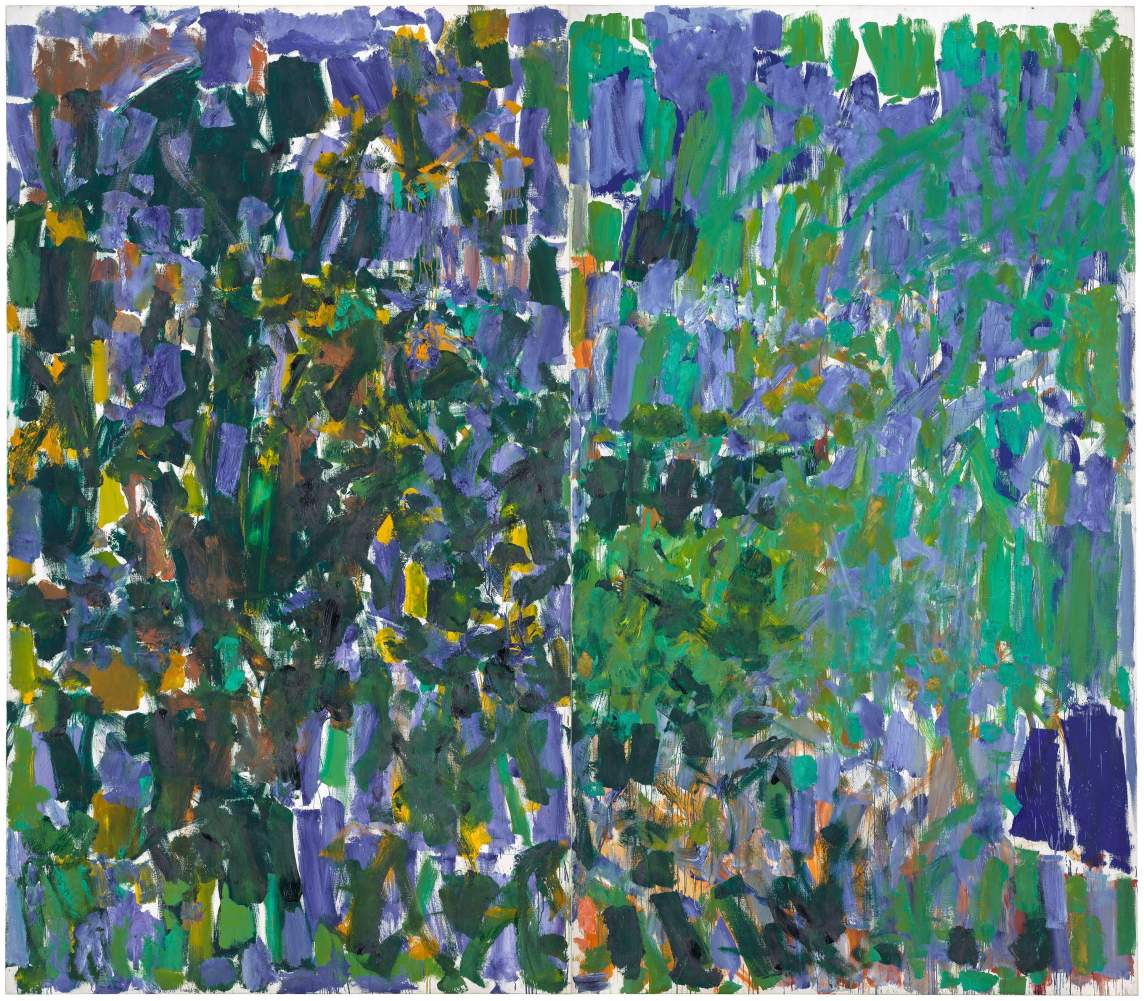
Heel, Sit, Stay, 1977
In the late 1970s, Mitchell moved toward covering her canvases in densely applied thatches of vertical brushstrokes. Primarily rendered in shades of green and blue, these works suggest the experience of immersion in a verdant garden or forest. Mitchell was drawn to abstract painting for its capacity to connect multiple ideas, memories, and feelings at once. The title Heel, Sit, Stay references Mitchell’s beloved dogs; spending time in her gardens at Vétheuil with them was a central part of her daily life and perhaps a point of departure for this work.

La Vie en rose, 1979
The composition of La Vie en rose unfolds across its four panels like four movements of a symphony, each building off the other but proceeding with differing intensity. Created at a moment of life change as Mitchell separated from painter Jean Paul Riopelle, her long-term partner, the title sardonically refers to Edith Piaf’s famous song of love, and the painting was the largest and most ambitious she had undertaken at that time. Monumental and melancholy, La Vie en rose speaks of love lost, but also thrums with life, as dedication to painting continued to propel Mitchell forward.

Grand Vallée IX, 1983
Mitchell’s Grand Vallée works were inspired by a friend’s recollection of playing as a child in an idyllic valley in the country. The works are unmatched in Mitchell’s body of work for their intensity of color and closely-knit brushwork, and they display an extraordinary range of hues. The explosive surfaces and unusual color harmonies suggest the unbridled and regenerative power of nature.
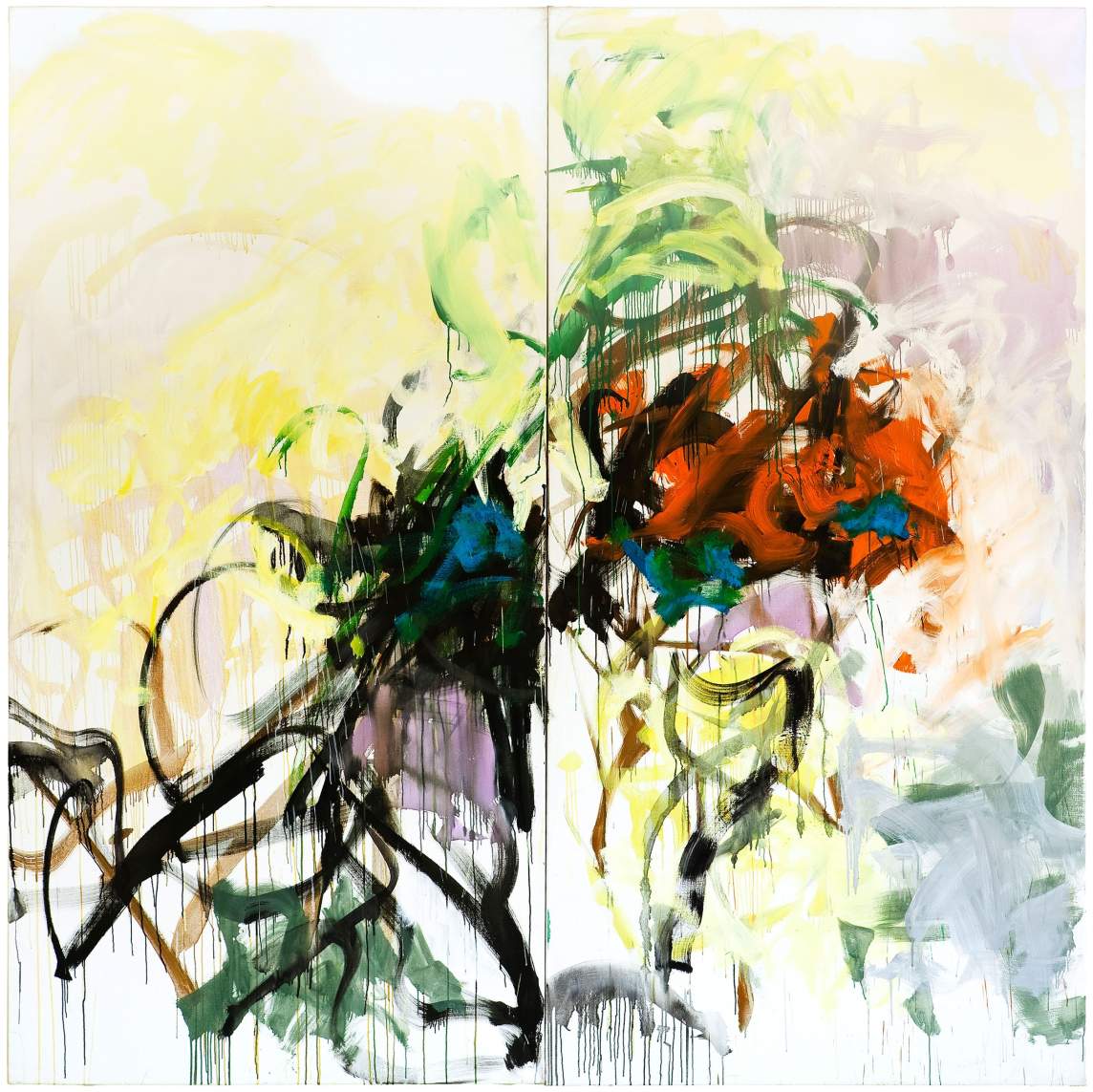
Faded Air I, 1985
Distinguished for its discordant color and raw, ragged marks, Faded Air I was painted as Mitchell faced the impact of AIDS among her friends as well as her own diagnosis with cancer. Mitchell fearlessly wrested a powerful, moving composition from unconventional, unappealing color, demonstrating her determination to continue pushing herself and the conventions of painting in the last decade of her life.
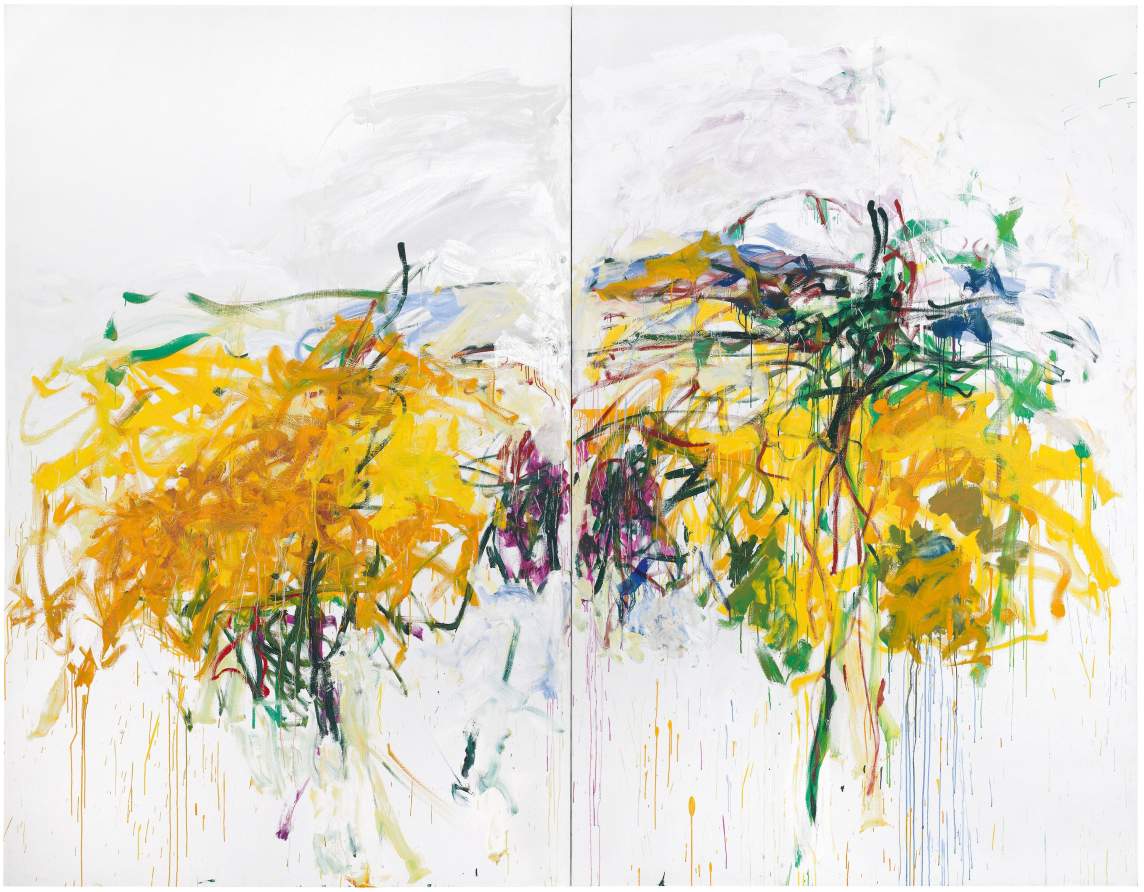
Untitled, 1992
In the last years of her life, Mitchell’s work became even more closely tied to nature and the line between abstraction and representation became more porous as she continued to try new ideas and methods. Direct points of reference became more recognizable, particularly trees and sunflowers, which she had painted and titled works after since the mid-1950s. The sunflowers in Untitled stand isolated against a misty background, a beautiful, mournful, and vulnerable ode to nature, Van Gogh, and her own life as a painter.
